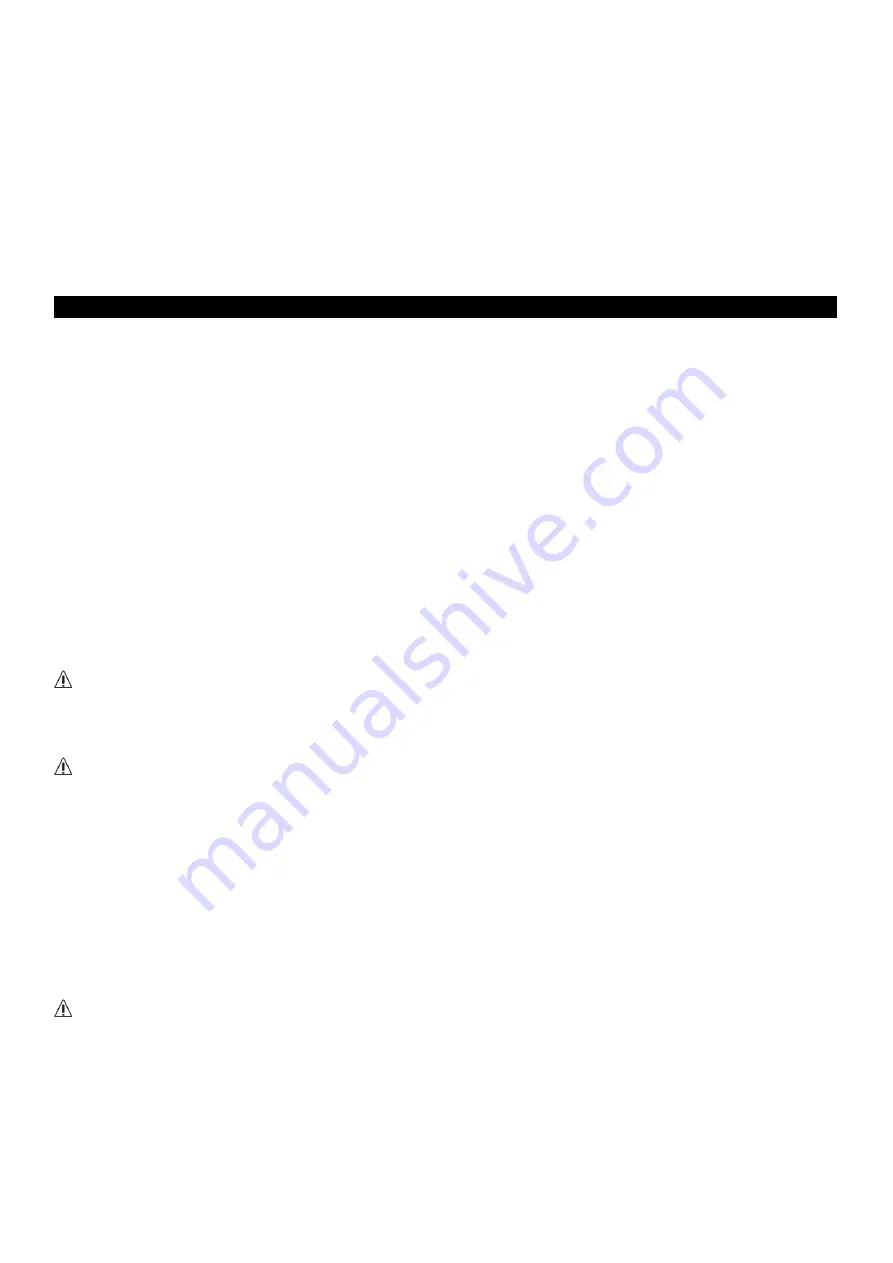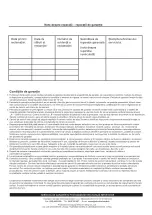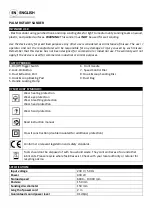
- Be especially careful when using a machine for both wood and metal sanding. Sparks from metal can
easily ignite wood dust. Always clean your machine thoroughly to reduce the risk of fire
- Work surfaces and sandpaper can become very hot during use, if there is evidence of burning (smoke or
ash), from the work surface, stop and allow the material to cool. Do not touch work surface or sandpaper
until they have had time to cool
- Do not touch the moving sandpaper
- Always switch off before you put the sander down
- Always unplug the sander from the mains power supply before changing or replacing sandpaper
- Even when this tool is used as prescribed it is not possible to eliminate all residual risk factors. If you are in
any doubt as to safe use of this tool, do not use it
BEFORE USE:
………………..............................................................................................................................
- Carefully unpack and inspect your tool. Familiarize yourself with all its features and functions
- Ensure that all parts of the tool are present and in good condition. If any parts are missing or damaged,
have such parts replaced before attempting to use this tool
SELECTING THE RIGHT GRADE OF SANDING SHEET
- Sanding sheets are available in a variety of different grades: coarse (60 grit), medium (120 grit) and fine
(240 grit)
- Use a coarse grit to sand down rough finishes, medium grit to smooth the work, and fine grit to finish off
- Always use good quality sanding sheets to maximize the quality of the finished task
- It is advisable to do a trial run on a scrap piece of material to determine the optimum grades of
sandpaper for a particular job. If there are still marks on your work after sanding, try either going back to a
coarser grade and sanding the marks out before recommencing with the original choice of grit, or try using
a new piece of sandpaper to eliminate the unwanted marks before going on to a finer grit and finishing the
job
FITTING A SANDING SHEET
WARNING:
Always ensure that the tool is switched off and the plug is removed from the power point
before fitting or removing sanding sheets.
Note:
DO
NOT continue to use worn, torn or heavily clogged sanding discs. Ensure foreign objects, such as
nails and screws, are removed from the workpiece before starting to sand.
WARNING:
DO NOT use a sanding disc on wood that has previously been used on metal. This may
cause scouring on the wooden surface.
- In order for the dust extraction system to function, this sander must only be used with punched sanding
discs with holes that match the holes in the backing pad:
1.Remove the old sanding disc (if fitted), by peeling it away from the Hook & Loop Backing Pad (4)
2.Remove any dust or debris from the Hook & Loop Backing Pad
3.Match the holes in a suitable Hook & Loop Sanding Disc (8) with the holes in the Hook and Loop
Backing Pad
4.Simply press the disc on to the pad to attach it
Note:
To maximize the life of the hook and loop base, peel the sanding disc off slowly rather than rapidly
removing it to avoid damage to the hook and loop system.
WARNING:
Take care to regularly clean out the build-up of dust on the base underneath the sanding
disc and not to let the disc wear completely down before replacing it. Failure to observe these two
precautionary measures can lead to damage to the hooks and loops on the base, and the sanding sheet will
not attach properly.
ADJUSTING THE FRONT HANDLE
-The Front Handle (6) can be adjusted into a position that best suits the task and operator preference
- To move the Front Handle, loosen the Handle Locking Clamp (5) by turning it anticlockwise
- The handle will now be free to pivot





































